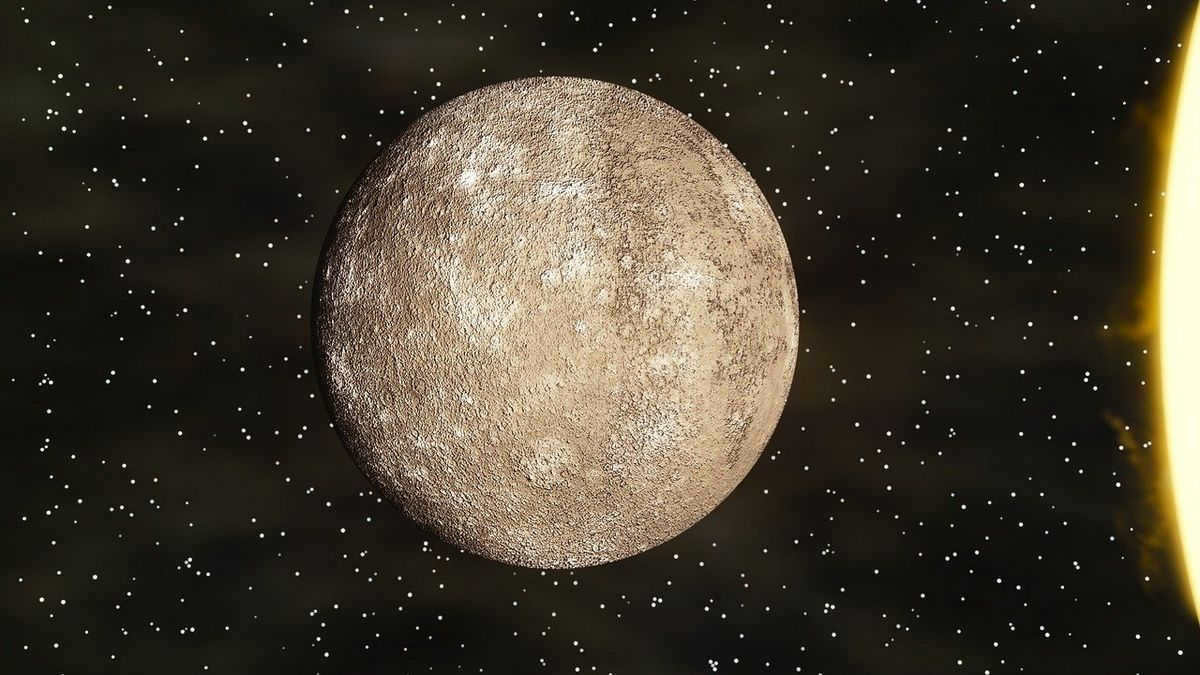
The issue of determining the smallest planet in our solar system can be a bit perplexing. Until recently, there were 9 celestial bodies considered significant. However, in 2006, Pluto was reclassified as a dwarf planet, and Mercury took its position as the smallest planet.
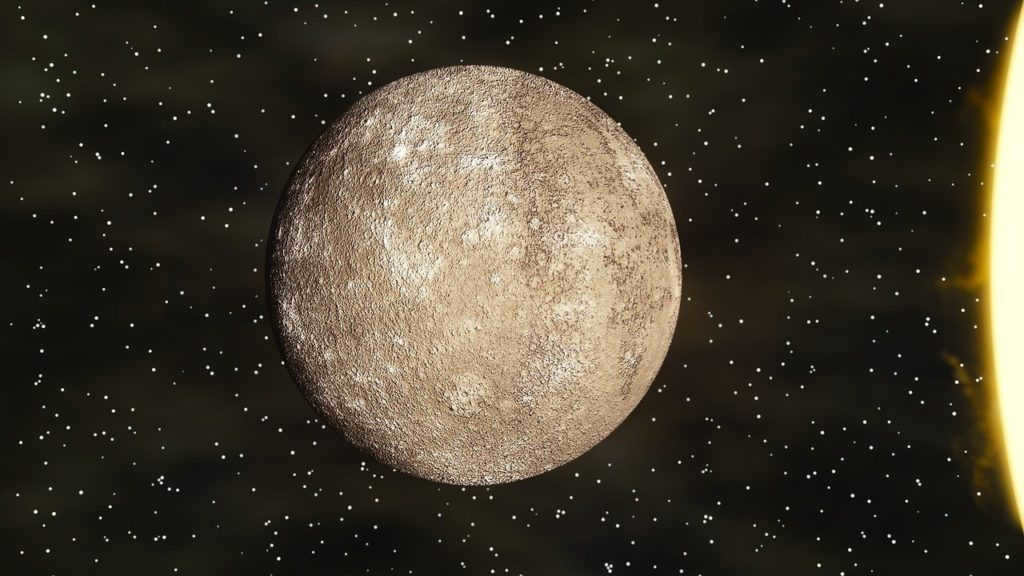
The tiniest planet in the solar system: what is it?
Based on current data, Mercury is recognized as the smallest planet in the solar system. It is a spherical object composed mainly of rock, bearing a striking resemblance to the Moon in terms of appearance. The presence of numerous craters, resulting from collisions with celestial bodies, further enhances this resemblance.
Its status as the smallest planet is determined by its size. Once again, it is appropriate to draw a comparison with Earth’s satellite, as it is only slightly larger than the Moon. In fact, even Titan and Ganymede, which are mere satellites, have a greater radius than Mercury.
Reasons for Mercury being the Smallest Planet in the Solar System
Mercury, a planet in the solar system, derives its name from the Greek god associated with commerce. It has a radius that is only one-third the size of Earth, making it comparable to a pea when compared to the massive Jupiter.
In the vast universe, every celestial body possesses its own unique characteristics. Mercury, being the smallest planet in the solar system, is no exception. Scientists continuously make new discoveries and share the information they already possess. There are many interesting facts to be learned about this “crumb” of a planet.
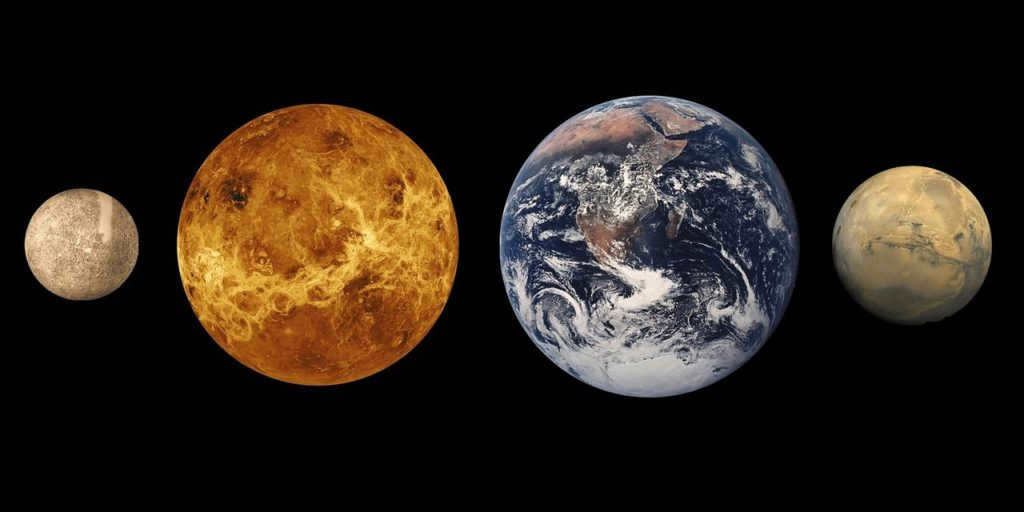
Characteristics of the planet’s structure
There are two types of planets:
Mercury is classified as terrestrial planets. It is composed of a combination of metal and rock. The planet’s surface is covered in craters and evidence of compression. This is the prevailing scientific theory. There is a hypothesis that the planet was slightly larger in the past, but over time, it has gradually eroded due to collisions with other celestial bodies.
Interestingly enough, beside the inquiry of which planet in the Earth’s group is the smallest, one can pose another question – which is the fastest? The answer lies with Mercury. Its average velocity measures 47 km/s, while its maximum speed reaches 57 km/s. In terms of Earth time, a year on Mercury lasts 88 days.
In the mid-20th century, it was widely believed that the time it takes for Mercury to orbit the sun and rotate on its own axis was the same. However, it wasn’t until the 1960s that it became clear that a year on Mercury is equivalent to 1.5 days. In other words, for every two revolutions around the sun, the planet completes two rotations on its own axis.
Unusual Shift of Orbit
The orbital movement of Mercury had an unexpected impact on the advancement of physics. Scientists discovered that its axis was slowly changing, and they also observed a shift in the perihelion. This motion did not conform to Newton’s law of universal gravitation.
Physicists were compelled to seek an explanation. Through his research, Einstein derived the equations that eventually formed the foundation of the theory of relativity. These equations accurately described the precise displacement exhibited by the orbit.
History and research
Do you know which planet is the smallest in the solar system? Well, it turns out that it is also the least explored. Throughout its exploration, only two spacecraft have come close to the Sun. One of them simply orbited around it, while the other went into orbit.
Admittedly, there have been images created from the surface. The spacecraft carried out limited studies that enabled scientists to make a few conclusions. However, there are still some controversial questions remaining, as researchers continue to search for ways to thoroughly study the smallest planet in the Earth group.
The Mass and Size of the Smallest Planet in the Solar System
The title of the smallest planet in the solar system was held by Mercury until 1930 when a new classification recognized Pluto as a planet and bestowed upon it the “title” of being small. However, in the new century, justice has been restored.
Research has allowed us to determine which planet is the smallest in the solar system. Conclusions are drawn based on the size and weight of the celestial body. The radius of this planet is a mere 2439.7 kilometers, with the radii of the poles and equator being equal.
The mass of this celestial body is Z.ZZ x 102Z kilograms, making it the lightest planet in the solar system as well.
When it comes to density, Mercury is the second closest to Earth. It measures 5.427 g/cmZ, which is quite comparable. The low gravity on Mercury is mainly due to its small mass compared to other celestial bodies.
Mercury has a volume of 6.08Z x 1010 kmZ, which is just 0.05 of the volume of our home planet. To put it in perspective, you could fit 20 of these spheres inside a single globe.
The structure and composition of the tiniest planet
Mercury is made up of a solid core, a layer of silicate mantle, and is completed by a crust. For numerous years, scientists had believed that the core was solid. However, in 2007, after carrying out a series of analyses and observations, a theory emerged suggesting that the core might actually be liquid.
The core has a radius that is approximately 70% of the total size of the planet. It is then enveloped by the mantle, which has a thickness of around 600 kilometers. Lastly, there is the crust, which only extends between 15 to 40 kilometers above the surface.
Other tiny exoplanets
After identifying the “infant”, we are still left wondering about the name of the tiniest planet in the entire cosmos. To find out, we must not only be familiar with all the dwarf planets within our solar system, but also with celestial bodies in other galaxies.
Observing what occurs at a vast distance from Earth is extremely challenging. However, there are times when scientists stumble upon astonishing revelations. One such discovery is Kepler-37 b, situated in the Lyra constellation, approximately 210 light years away from our planet. Presently, it holds the title for the smallest known planet in the entire universe. Nevertheless, future research might offer us new insights, allowing us to uncover the identity of the tiniest speck in the entire Galaxy.
Fascinating Trivia
- During the day, the surface of Mercury can reach scorching temperatures of up to 450 degrees, only to plummet to a chilling -170 degrees at night.
- Mercury has a playful side and enjoys engaging in a cosmic game of “hide and seek,” often concealing itself behind the radiant glow of the Sun.
- Unlike other celestial bodies, Mercury can be observed in the night sky without the need for specialized optics.
- When viewed from Mercury, the Sun appears three times larger than it does from Earth, creating a breathtaking spectacle.
Mercury holds the distinction of being the smallest planet in our solar system. In 2006, astronomers officially classified it as such, dethroning Pluto from its previous status as the smallest planet. Extensive research and analysis led scientists to reclassify Pluto as a dwarf planet. Despite the challenges posed by its close proximity to the Sun, Mercury continues to captivate astronomers, who have uncovered a wealth of intriguing information about this enigmatic planet.
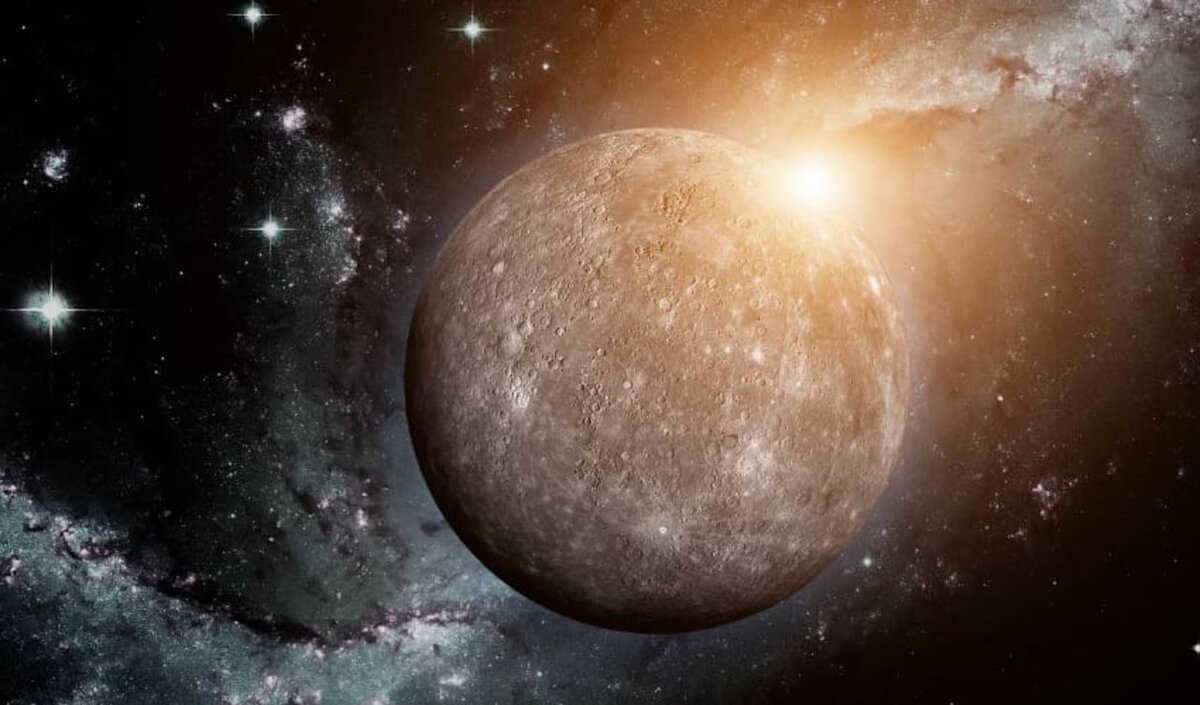
Mercury is the nearest planet to the Sun in the Solar System, and it is the smallest among the planets in the Earth group. Credit: yandex.kz
Planets similar to Earth
The Earth group is situated in the inner part of the Solar System. The arrangement of the planets in this group, in relation to the star, is as follows: Mercury, Venus, Earth, Mars, followed by the gas giants Jupiter, Saturn, Uranus, and Neptune, which belong to the outer region.
The planets similar to Earth share common characteristics:
- They are relatively close to the Sun;
- They do not have rings made of dust and ice;
- They have a high-density core, consisting mainly of iron and nickel;
- They have a silicate mantle;
- They have a crust made of silicate rocks with the inclusion of incompatible elements.
Mercury
Mercury, the nearest planet to the Sun and the smallest in size, does not have any significant moons. In terms of Earth’s mass, Mercury weighs only 5.5%. Its atmosphere is incredibly sparse and its crust is relatively thin. However, the planet’s core is proportionally large compared to its crust and mantle. The rocky surface of Mercury resembles that of the moon, with numerous craters resulting from impacts by celestial objects, giving rise to a diverse topography.
Venus
Venus has a size that is slightly smaller than Earth, with 80% of our planet’s mass. It has a significant amount of water and is surrounded by an atmospheric layer. The atmosphere on Venus is dense, being 90 times denser than Earth’s, and it is rich in carbon dioxide. The surface temperature of Venus can reach up to +400°C, and it experiences a greenhouse effect. Unlike Earth, Venus does not have a magnetic field. Instead, it has an iron core that is surrounded by a thick layer of silicate shell.
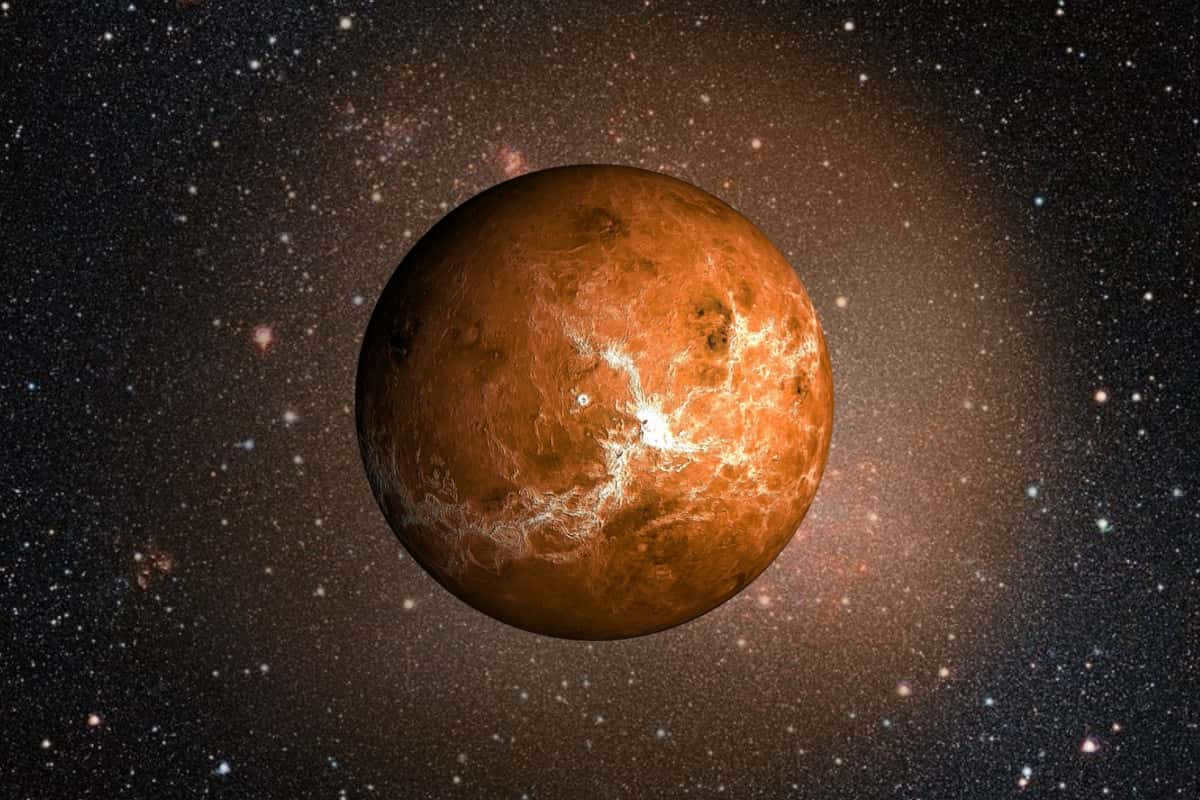
Earth
Earth is the largest and most dense planet in the Earth group, with an average radius of 6378.1 km. It stands out for having a hydrosphere, which is a shell of water, and an atmosphere that contains free oxygen. These conditions have made it possible for life to originate. The Moon is Earth’s natural satellite, with a radius 3.6 times smaller and a mass 81.3 times smaller than Earth’s.
Mars
Mars has a mass that is approximately one-tenth that of Earth. The atmosphere of Mars is predominantly composed of carbon dioxide. The soil on the surface of Mars contains a significant amount of iron oxide, resulting in its distinctive reddish hue. Scientists speculate that the moons Deimos and Phobos may have originated as asteroids that were captured by the gravitational pull of Mars.
The planet came into existence 4.5 billion years ago. It was given the name of the Roman deity associated with trade. Mercury is smaller in size compared to Earth, with a diameter that is 2.5 times less. However, its orbital velocity is 1.6 times greater than that of Earth. This makes it the swiftest planet in the entire solar system.
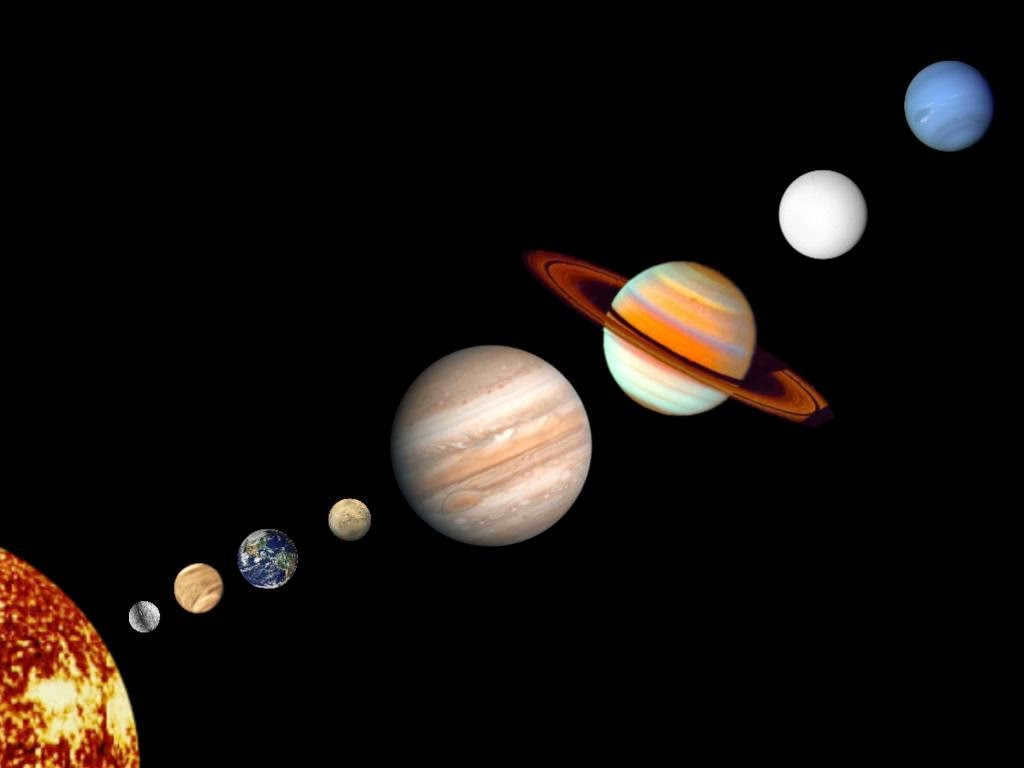
Mercury has been consistently described by planetary scientists as the “most” in several aspects: the smallest, the fastest, the highest density, the largest core, and the largest temperature difference.
Exploration of Mercury: A Historical Perspective
The earliest documented records of observing Mercury can be traced back to the 14th century B.C. As per the astrological records of Assyrian scientists, the celestial body was referred to as a “bouncing planet”.
Throughout history, different civilizations have assigned various names to the planet. The ancient Egyptians named it Seth and Horus, after their gods. The Greeks called it Stilbon and Sparkling, while the Chinese sages referred to it as the Morning Star. The Hindus named it Budha.
During the Middle Ages, European scientists faced numerous challenges in exploring Mercury. Its visibility was limited to the early morning hours in northern latitudes. Even during the most favorable conditions, observing the faint star against the backdrop of a bright sky proved to be a difficult task. Copernicus emphasized the need for patience and ingenuity to study Mercury.
It was Galileo Galilei who first observed Mercury through a telescope. In the 19th century, astronomers were able to calculate its rotation periods and map its surface.

Increased knowledge about the distant planet has been made possible through the utilization of spacecraft and the advancement of new research techniques such as radar and radio astronomical methods. However, the challenges associated with the Sun’s proximity still present difficulties that must be overcome.
The initial interplanetary station to reach Mercury in 1974 was the “Mariner-10” with its automatic control system. The American station provided valuable materials that resulted in the creation and processing of thousands of computer-generated images, as well as the development of a map of Mercury’s surface.
In August 2004, the second automated spacecraft, Messenger, was launched. It successfully orbited Mercury for the first time in 2008 and eventually became its artificial satellite in 2011.
The planetologists are reluctant to use the world’s largest telescope, known as “Hubble,” for observation due to the risks posed by its proximity to the luminary. There is a danger that the equipment could be damaged and rendered irreparable.
Roscosmos is currently developing projects to launch a space probe called “Mercury-P” that will eventually land on the surface of Mercury.
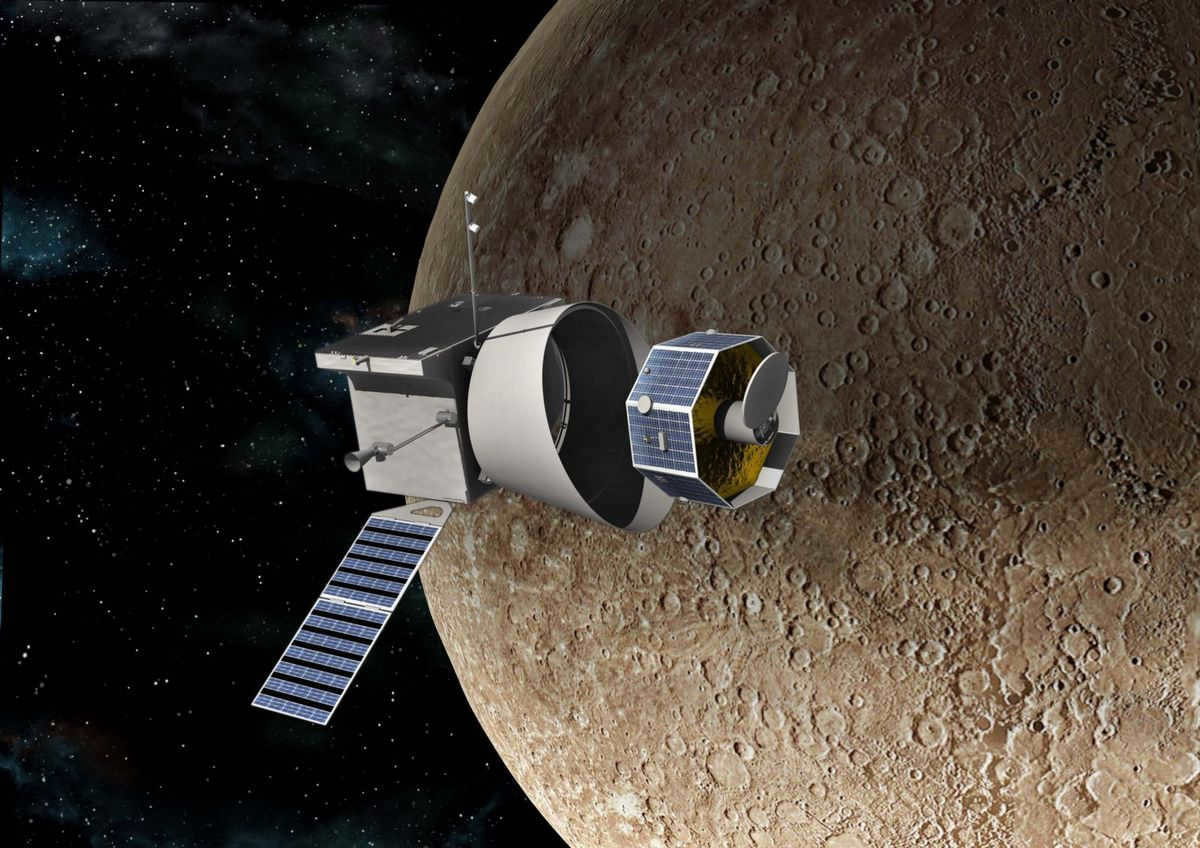
Characteristics of the structure
Mercury is in the shape of a sphere. The surface is covered in craters – evidence of impacts from solid objects from outer space. The largest crater measures 1525 km × 1315 km. The plains are composed of basaltic rocks, which were erupted from the interior.
One distinctive feature of Mercury is the long rocky ridges (escarpments) that formed during the planet’s compression.
The mantle is made up of silicate materials with a complex chemical composition. It has a thickness of up to 600 km.
The iron-nickel core (with a radius of 1800 km) exists in a liquid state. The concentration of iron is higher compared to other planets.
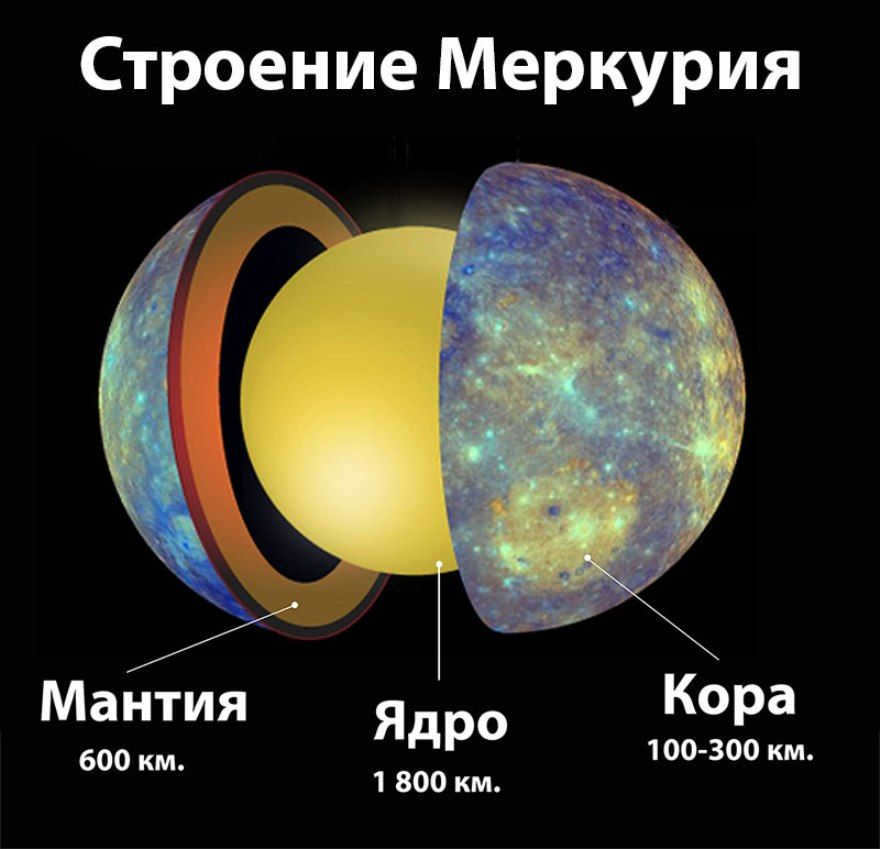
Due to the rarefaction of its atmosphere, its close proximity to the Sun, and its slow rotation on its own axis, the surface of Mercury experiences dramatic temperature changes. The difference in temperature between day and night is extreme: during the day, the maximum temperature reaches +430°C, while at night, the surface cools down to -170°C.
Scientists hypothesize that deep craters located at the poles of Mercury may contain water ice.
Anomalous precession of Mercury’s orbit and planetary movement
Observations of the motion of Mercury provided astronomers and mathematicians with evidence supporting Einstein’s theory of gravity.
Astronomer Leverrier noticed that the actual movement of the planet differed from the predicted movement.
The shift in perihelion attempted to explain the presence of an unidentified planet affecting Mercury. It was even given the name Vulcan, but was never discovered.
After further calculations, scientists determined that the discrepancy was due to the inaccuracies in Newton’s law of universal gravitation.
The orbital motion of Mercury is considered unique by planetologists. Traveling in an elongated elliptical orbit at a velocity of approximately 48 km/s, the planet completes one revolution around the Sun in 88 Earth days.
The speed of axial spin remains constant, but the orbital speed fluctuates.
Mercury possesses another characteristic that sets it apart: it experiences no seasons due to its axis of rotation being perpendicular to its orbital plane.
Other Tiny Planets in the Universe
Scientists propose the existence of minuscule planets in the Milky Way that are even smaller than Mercury. These planets are incredibly challenging to detect due to their immense distances. Unlike stars, they do not emit light, and they also lack the substantial heat emitted by gas giants.
One of the smallest known planets to date is Kepler-37b, which was discovered in 2013 in the constellation Lyra. It is comparable in size to the Moon, with a diameter of 3900 km, while the Moon’s diameter measures 3474 km.
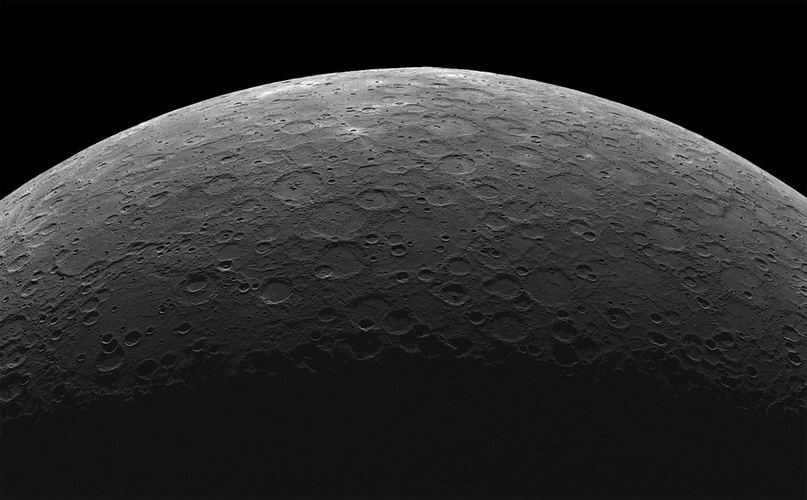
At present, Mercury is acknowledged as the tiniest celestial body within our solar system.


The transit of Mercury across the Sun’s disk occurred on November 8, 2006.
Mercury revolves around the Sun at a distance of 47 million km in an elongated elliptical orbit with an average velocity of 48 km/sec. Limited information is available about this planet due to its close proximity to the Sun, which presents challenges in studying it.
The MESSENGER spacecraft has created a comprehensive global map of Mercury.
Unprecedented temperature fluctuations
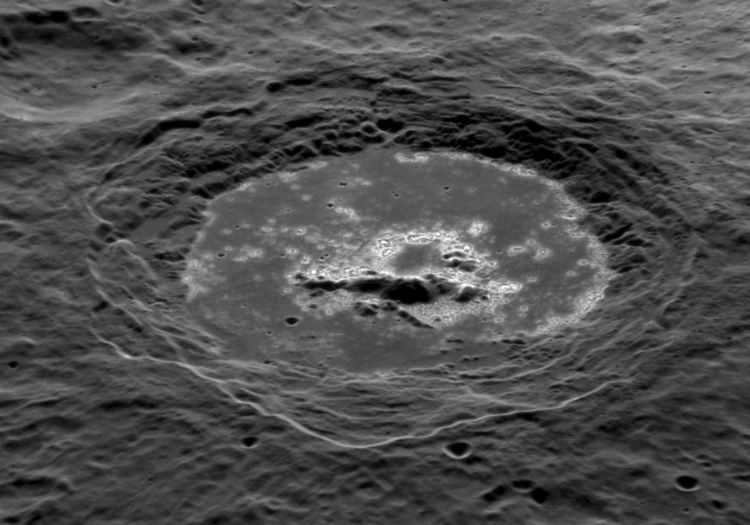
Photo of Warhol Crater
This tiny planet within our solar system experiences the most extreme temperature fluctuations compared to any other known planet in the system. These extreme temperature variations are a result of its close proximity to the Sun, the absence of an atmosphere, and its relatively slow rotation. During the day, the average temperature soars to approximately 350 °C above zero, while at night it plunges to around 170 °C below zero. The lowest temperature ever recorded on Mercury is minus 183 °C, while the highest temperature, occurring during the planet’s perihelion at “hot longitudes,” reaches a scorching plus 427 °C. Despite these harsh conditions, contemporary scientists have proposed the presence of ice on Mercury’s surface.
Not big, yet far away…
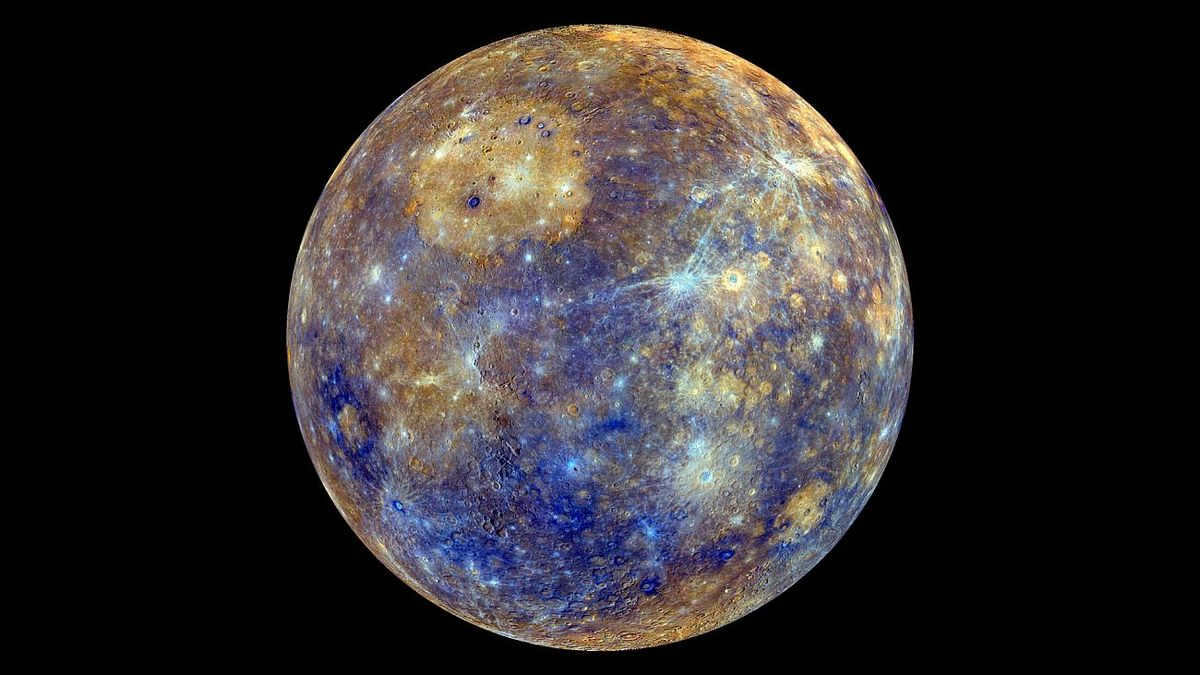
Mercury is also the tiniest planet in the Earth group. It has a circumference of only 4879.4±1.0 km, which is smaller than Ganymede, a moon of Jupiter, and Titan, a moon of Saturn. However, despite its smaller size, Mercury still exceeds these moons in mass due to its massive core, which is 3.3 × 10 to the 23rd degree kg. The average density of Mercury, which is relatively small, is slightly lower than that of Earth, which is much larger, at 5.43 g/cm³. This indicates a high metal content in Mercury’s interior.
When it comes to surface features, Mercury is nearly identical to the Moon. It is also heavily cratered, but unlike the Moon or Mars, its surface is completely uniform. This distinction sets it apart from other celestial bodies. The absence of surface erosion essentially disproves the possibility of Mercury ever having a significant atmosphere. Current data indicates that the atmospheric pressure on this planet is 5×10 to 11 times lower than that of Earth.
Disproving the existence of Mercury’s metal core.
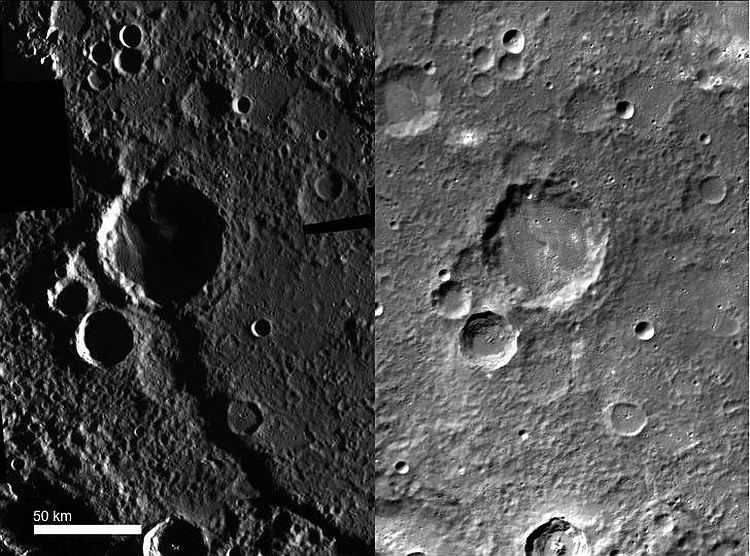
An unexpected finding on Mercury. Sometimes, the play of light can unveil surprising details.
Until recently, the scientific community held the belief that Mercury consisted of a metallic core measuring about 1900 km in radius. This core was thought to be located in the planet’s interior, making up 60% of its mass. It was also believed that the core’s surface was covered by a silicate shell, approximately 600 km thick. These speculations were based on the detection of a very weak magnetic field during investigations. At the time, it was thought impossible for a planet of such small dimensions to have a liquid core.
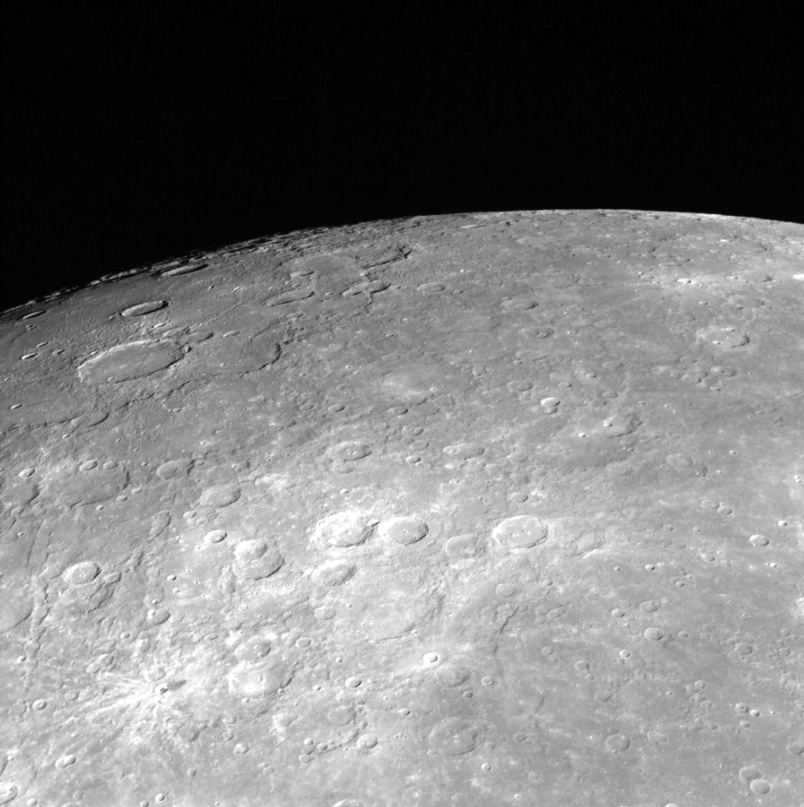
However, in 2007, Jean-Luc Margot and a team of prominent astronomers disputed this theory after analyzing five years of radar observations of the celestial body. They discovered significant variations in rotation that were inconsistent with a planet possessing a solid core.
Watch this captivating documentary by the European Space Agency that delves into the fascinating world of Mercury.
Many people are unaware that Pluto is now classified as a dwarf planet within our solar system. In fact, there are currently several dwarf planets, with Pluto not even being the largest among them. Below, you can find some intriguing facts about these celestial objects.
The celestial bodies called dwarf planets
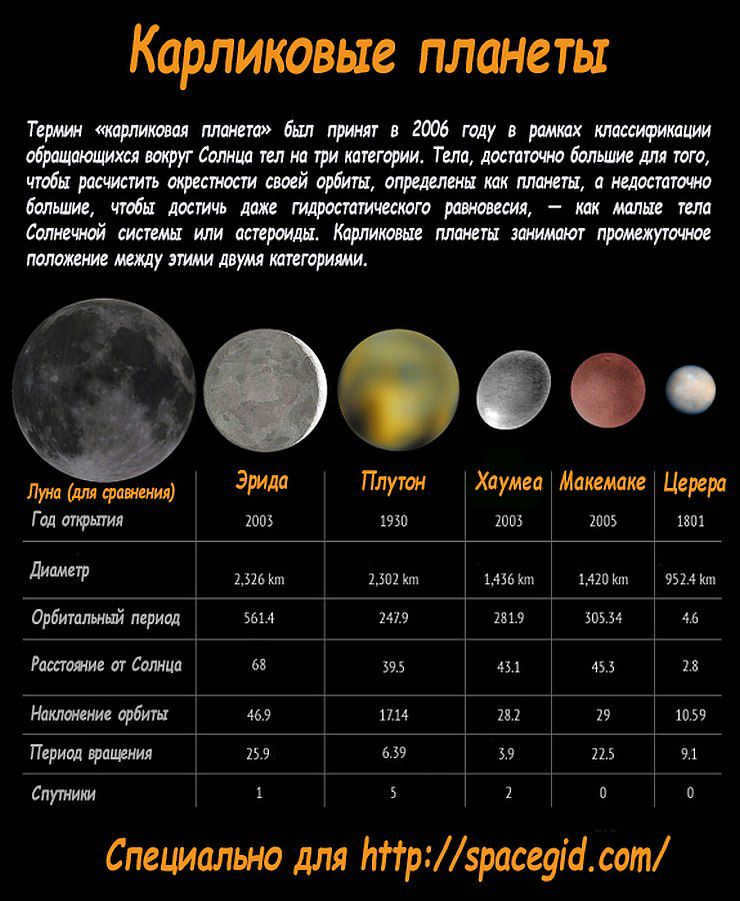
These celestial objects have not been extensively researched yet because of their distance from the center of our solar system. However, advancements in technology have allowed astronomers to continually expand their knowledge. The period from 2003 to 2005 was particularly productive in terms of discoveries. Modern technology enables us to observe even the most remote objects.
Pluto
Pluto is a dwarf planet located in our solar system.
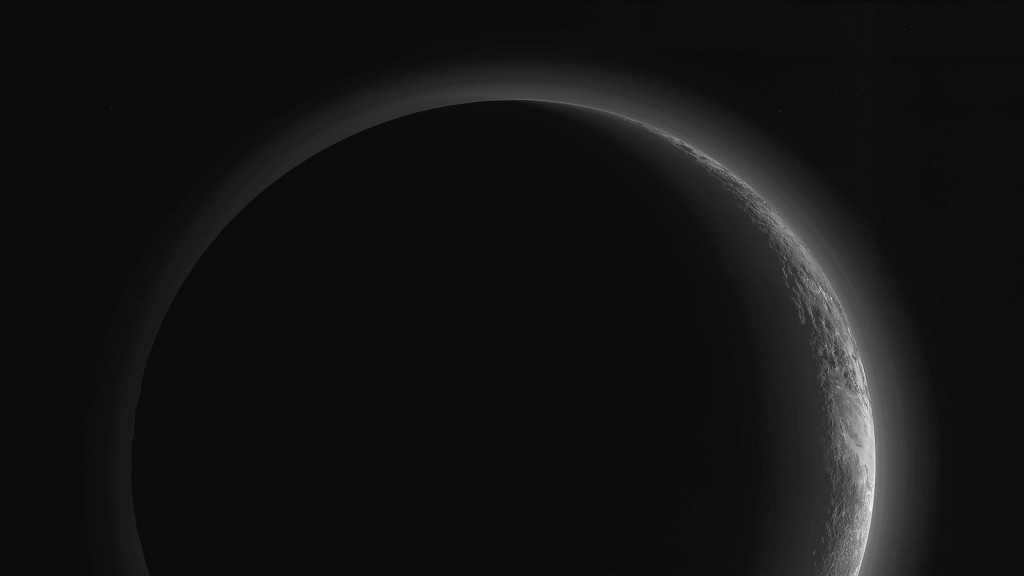
With a radius of just 1153 km, Pluto is one of the smallest objects in the Solar System. It takes 90,613 days (around 248 years) for Pluto to complete one orbit around the Sun, and it rotates on its axis every 6.4 Earth days. Initially, Pluto was considered the ninth planet after its discovery in 1930. However, in 2006, astronomers reclassified it as a dwarf planet in the Kuiper Belt. This belt was named after the discovery of several objects similar to Pluto in 2005.
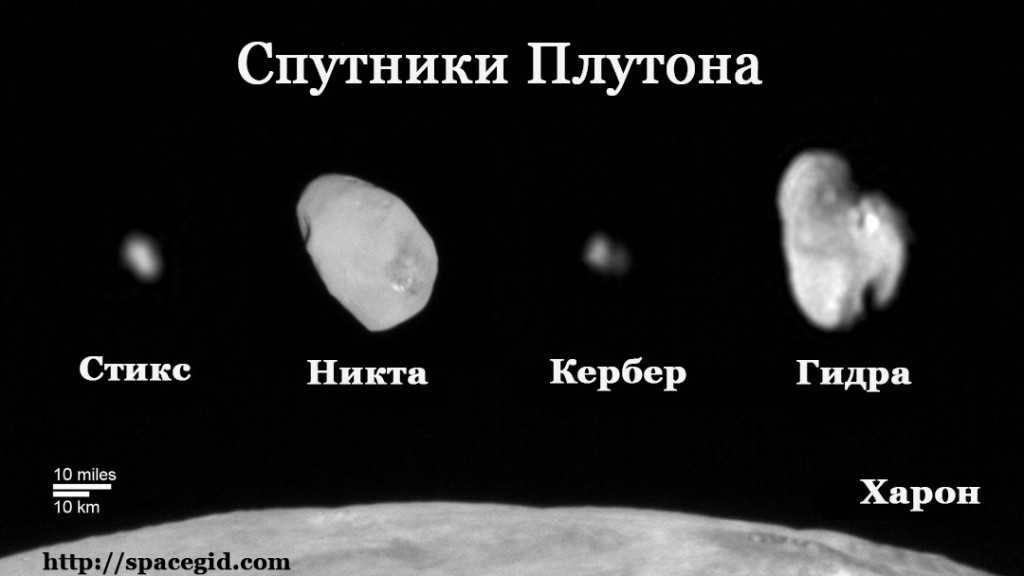

There are currently 5 known satellites that accompany Pluto – Charon, the largest of them, Kerber, Nycta, Styx and Hydra. The orbit of this small planet is quite stretched, with an elliptical shape.
Just a few years ago, scientists were able to measure the surface temperature of this celestial object. On July 14, 2015, the New Horizons spacecraft flew close to Pluto and sent back a vast amount of data and photographs of Pluto.
Haumea
Haumea is a dwarf planet located beyond Neptune in the Kuiper Belt. It was discovered in 2004 and is named after the Hawaiian goddess of fertility and childbirth. Haumea is unique in that it is elongated in shape, resembling a rugby ball. It has two moons, Hi’iaka and Namaka. Haumea completes one rotation every four hours, making it one of the fastest rotating objects in our solar system. Its surface is covered in a thin layer of water ice, which gives it a shiny appearance. Scientists believe that Haumea was once a round planet, but its fast rotation caused it to stretch out and become elongated. Its composition is similar to that of Pluto, with a rocky core surrounded by a mantle of ice. Haumea is one of the many dwarf planets in our solar system, and studying it can provide valuable insights into the formation and evolution of our celestial neighborhood.
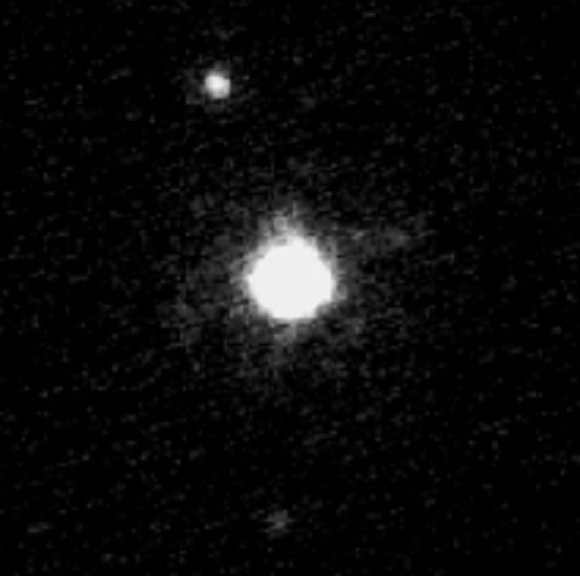
An image of Haumea with its satellites
Haumea is the planet with the fastest rotation in our solar system. It completes one revolution around its own axis in just 4 hours, which is the shortest rotation period known to date. However, it takes a much longer time to complete an orbit around the Sun, with a duration of 102937 days, or almost 282 years. Haumea is also one of the smallest celestial objects, with an average radius of only 718 km. Its shape is irregular and appears flattened compared to other planets. Additionally, Haumea has two satellites, named Hiiaka and Namaka.
Makemake
Makemake is a dwarf planet in the outer solar system. It was discovered in 2005 and is named after the creation deity of the Rapa Nui people of Easter Island. Makemake is one of the largest objects in the Kuiper Belt, a region of icy bodies beyond Neptune. It has a diameter of about 1,430 miles and is estimated to be about two-thirds the size of Pluto. Makemake has a reddish-brown color and its surface is covered in frozen methane, nitrogen, and carbon monoxide. It has no atmosphere and its temperature is estimated to be around -375 degrees Fahrenheit. Despite its small size and distance from the Sun, Makemake has been found to have a thin atmosphere of nitrogen. The discovery of Makemake has provided scientists with valuable insights into the formation and evolution of the solar system.
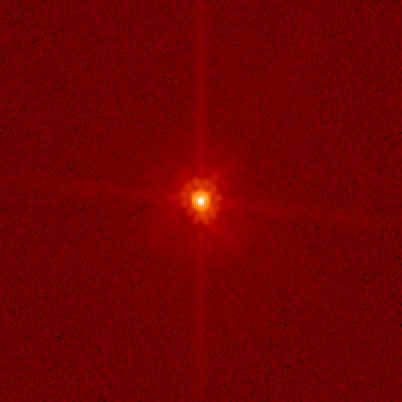
The Hubble telescope provides a view of Makemake, revealing its features.
The precise dimensions of the third largest planet are still unknown, but it is estimated to have an average radius of around 740 km with a margin of error of 17 km. However, scientists have accurately determined its orbital period, which spans approximately 111,867 days or roughly 306 years. No natural satellites have been detected in its orbit.
Erida
can be restated as “Erida is the name of the entity”.
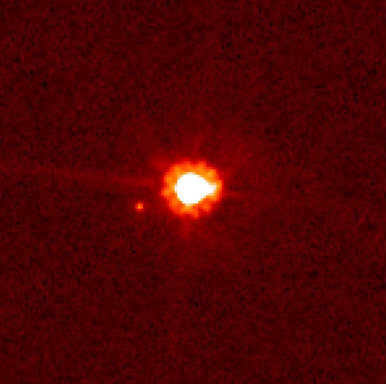
An illustration depicting Erida accompanied by a satellite
Erida, one of the notable objects in the Kuiper Belt, possesses a size just slightly larger than that of Pluto, measuring at 1163 km. It completes a full orbit around the Sun within a span of 205,029 days, equivalent to a little over 561 years.
The team of scientists who first identified this celestial body in 2005 initially believed it to be the 10th planet within our solar system, but it was later reclassified as a dwarf planet.
The discovery of Erida can be regarded as a pivotal moment in the field of astronomy, as it sparked numerous debates regarding the classification of Pluto.
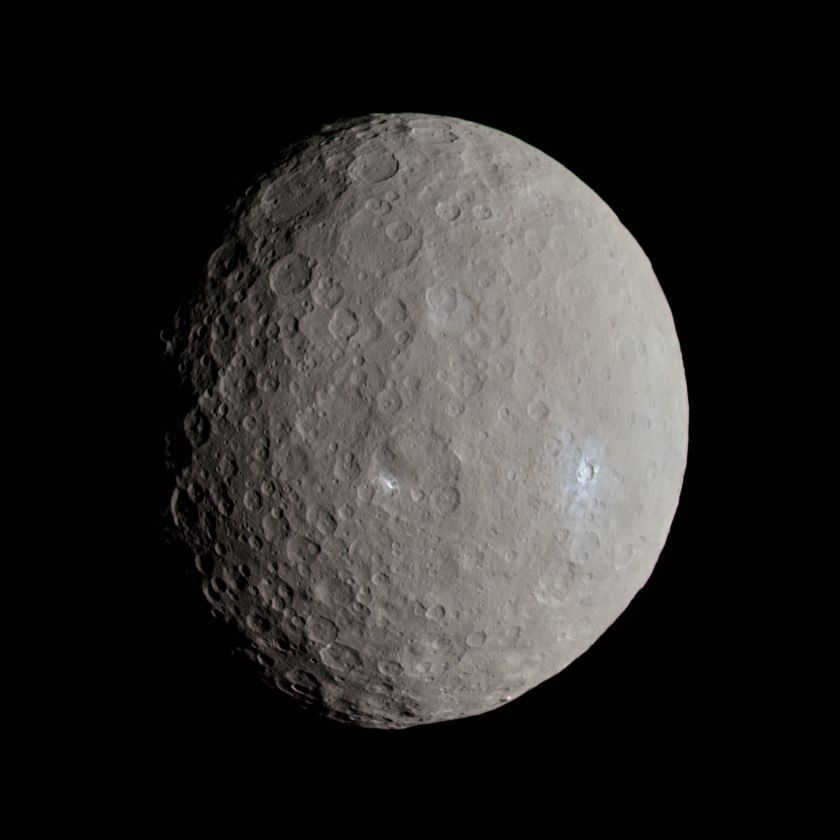
It is worth mentioning that up until a very recent time, Ceres was classified as an asteroid and held the top spot in terms of size among them. Its orbital period is quite short compared to other distant dwarf planets, lasting only 4.6 years.
When considering its diameter, Ceres is not as striking, measuring at 975×909 km. It takes approximately 0.3781 days for Ceres to complete one rotation around its axis. No natural satellites have been discovered orbiting Ceres.
Classification
There exists a unique classification for celestial bodies, which is subject to revision in light of new scientific discoveries.
The primary distinction between a planet and a dwarf planet lies in the latter’s inability, due to its gravitational pull, to clear its orbit of other celestial objects. While there are currently five recognized dwarf planets (Pluto, Ceres, Erid, Erida, Haumea, and Makemake), there are numerous other potential candidates. Some of these may even be visible through binoculars on a clear, dark night.
Enjoyed this entry? Share it with your friends!

Space
Mercury, the tiniest celestial body in our solar system, resides in close proximity to the radiant sun. However, its distinctiveness extends beyond its size. Due to its proximity to the horizon, Mercury is challenging to observe from our planet. It is only visible to telescopes for a short period of time in the early morning or late evening. This limited viewing angle means that only half of Mercury’s disk can be seen by observers.
Mercury’s dimensions and orbit
Mercury, the smallest planet in our Solar System, has a mass of approximately 3.3022×1023 kg and a diameter of 4879 km (with a radius of 2440 km).
Fascinating fact: Mercury’s diameter is only about one-third the size of Earth’s (which measures 12742 km), and its mass is a mere 18 times smaller. In terms of size, this planet is even smaller than some of the satellites found within our solar system.
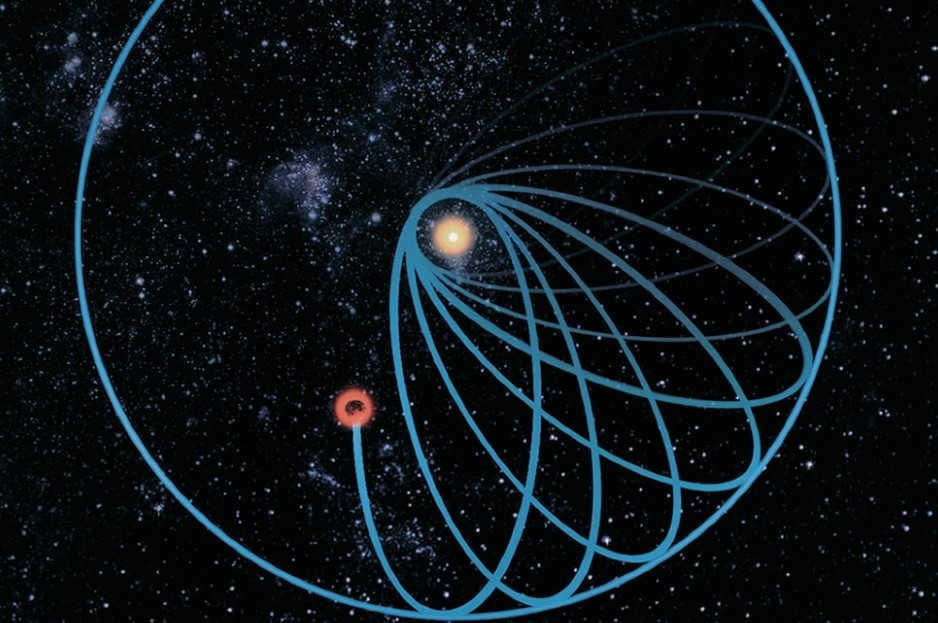
Despite its characteristics, Mercury is classified as a dense planet. In terms of density, it is only two times less than Earth.
Mercury has a unique orbit. It reaches its closest point to the Sun (perihelion) at a distance of 46 million kilometers and moves away to a distance of 70 million kilometers (aphelion). Due to this peculiarity, Mercury has an influence on neighboring planets, especially Venus.
Composition of the Atmosphere on Mercury
Mercury is primarily composed of a dense iron core, occupying most of its volume. The surface of the planet is covered by a relatively thin layer of solid rock. Unlike Earth, Mercury has a minuscule atmosphere, measuring 1015 times thinner than our own. This means that above the surface of Mercury, there is essentially a vacuum.
The exact reasons for the lack of a substantial atmosphere on Mercury are not fully understood. One theory suggests that the planet’s low density, which is only 30% of Earth’s, plays a role. Additionally, Mercury’s close proximity to the Sun exposes it to intense solar winds, which effectively blow away any gases that may attempt to form an atmosphere.
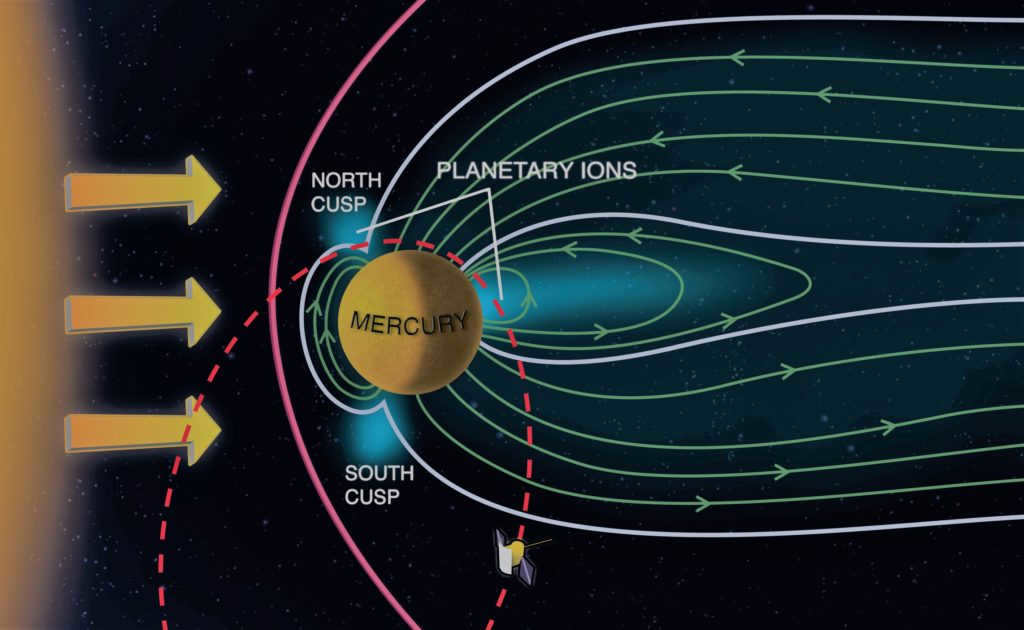
Research indicates that the thin layer above Mercury’s surface is composed of oxygen (42%), sodium (29%), hydrogen (22%), helium (6%), and potassium (0.5%). Magnesium, nitrogen, xenon, carbon dioxide, water, neon, calcium, and other substances are also present in small amounts in the planet’s atmosphere.
The sharp temperature contrasts over Mercury’s surface also play a significant role in its lack of atmosphere. Studies have revealed that these temperature fluctuations can reach up to 610 degrees Celsius (from -180 to +430).
Fascinating fact: Mercury is the only planet in the solar system that experiences such extreme temperature variations.
The lack of a multi-tiered atmosphere plays a specific part in this phenomenon. On our planet, dense layers of gases trap heat during the nighttime. However, Mercury, with its thin atmosphere, is unable to shield itself from the sun’s radiation. As a result, the heat dissipates into outer space almost instantly.
Thermal Conditions
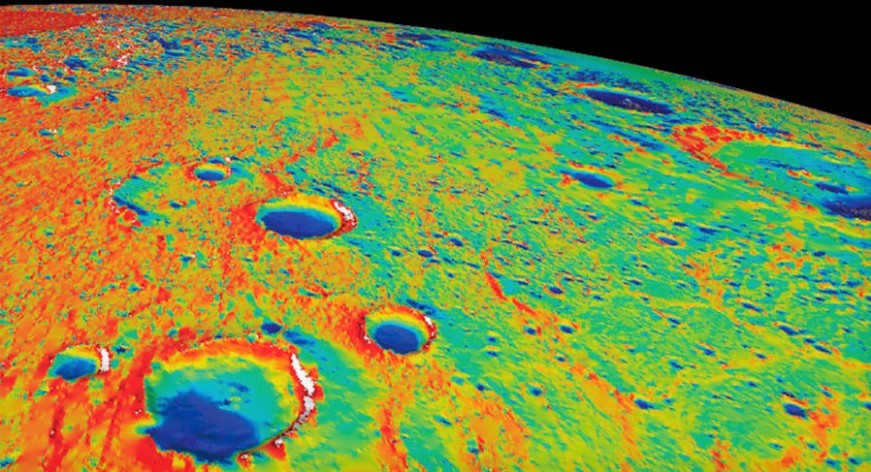
Mercury is comparable to the Moon due to its lack of atmosphere. On the side of the planet that is warmed by the Sun, the temperature can reach up to +430 degrees Celsius. Conversely, on the dark side of Mercury, the surface rapidly cools and temperatures can drop to -180 degrees Celsius during the night.
However, there are other distinguishing characteristics of Mercury. The planet’s surface layer is loose and exhibits low thermal conductivity. As a result, even at a depth of just one meter, the temperature of the rock stabilizes at +75 degrees Celsius.
Rotation
Mercury orbits the Sun at an average speed of 48 km/s, resulting in a year that lasts approximately 88 days. However, its rotational speed on its axis is 10,892 km/h, which means that a day on Mercury is just under 59 Earth days long.
The rotation of Mercury is not on a standard orbit. Over time, scientists have observed that Mercury gradually shifts its position relative to the Sun. This phenomenon is known as precession.
Here’s an interesting fact: The shift of Mercury’s orbit relative to the Sun was a perplexing mystery for astronomers in the 19th century. To explain this phenomenon, scientists even theorized the existence of an unknown planet closer to the Sun.
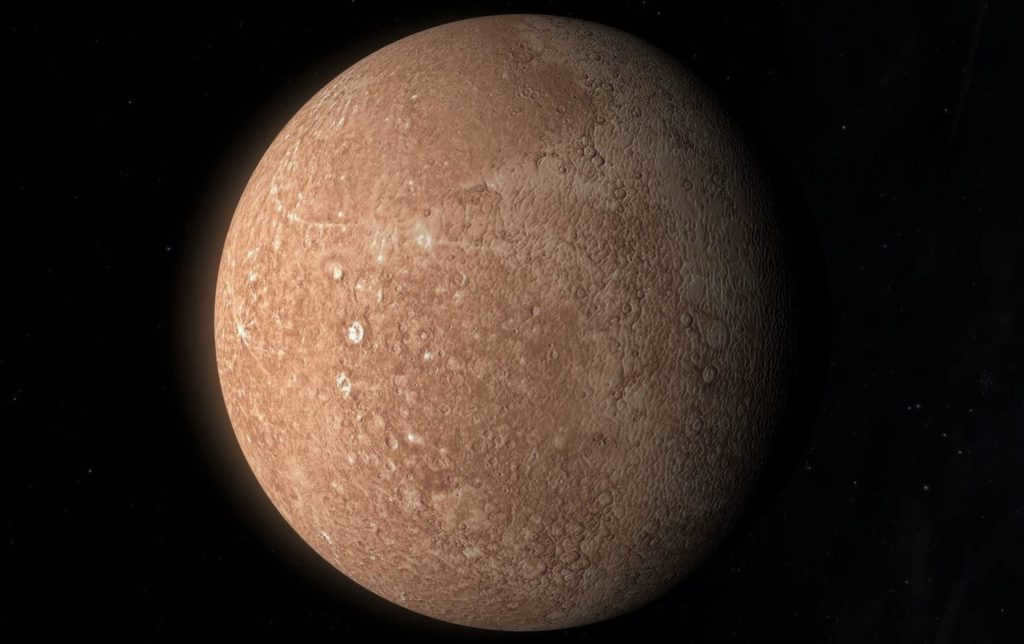
Due to the slow rotation of Mercury on its axis, one hemisphere of the planet is constantly facing the Sun for an extended period of time. As a result, the transition between day and night is extremely rare. On Mercury, this process takes significantly longer compared to other planets in our solar system.
Here’s an interesting fact: a day or night on Mercury lasts exactly as long as a year. This can be explained by the fact that the length of a day on Mercury is not much shorter than the duration of its orbital motion (which is 88 days).
Mercury’s orbit is tilted by just 7 degrees, resulting in the planet not experiencing seasonal changes. This unique characteristic also leads to certain regions near the poles that are perpetually deprived of sunlight.
Exploring the Surface of Mercury
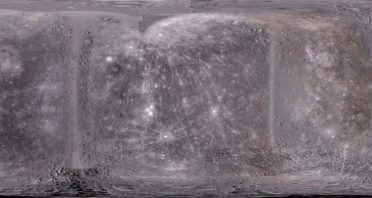
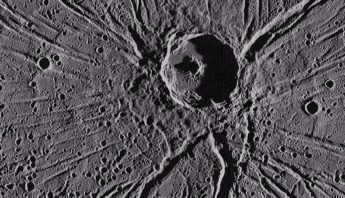
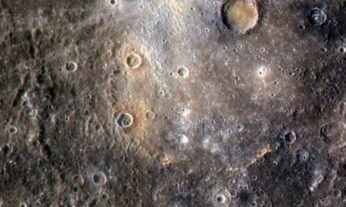
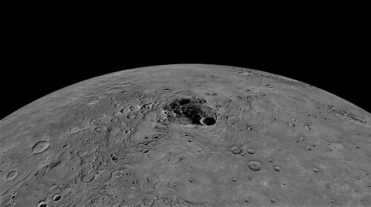
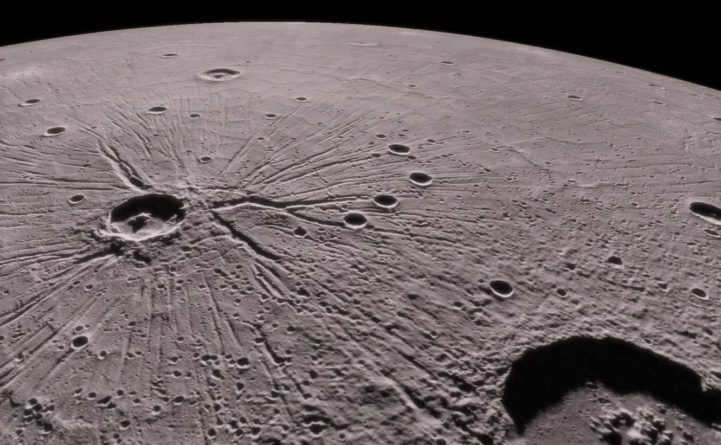
Until 1974, the surface of Mercury was a complete enigma. This was primarily because of the challenges faced in observing the planet from Earth. However, thanks to the photographs captured in 1974 by the Mariner 10 spacecraft, which orbited Mercury on three separate occasions, the mysteries of Mercury’s topography were finally unveiled.
Mercury boasts a complex topography, shaped by a multitude of craters that were formed as a result of frequent meteorite collisions in the distant past. Interestingly, the areas between these craters exhibit remarkably smooth surfaces, a consequence of ancient lava flows that once erupted on the planet. Furthermore, the images also revealed an abundance of rocks scattered across Mercury’s surface, stretching for thousands of kilometers but with heights not exceeding two kilometers.
A fascinating fact: the presence of extensive flat areas suggests that the planet was active geologically in the past. However, the abundance of craters implies the opposite. Scientists have yet to provide an explanation for this paradox.
Another distinctive feature is that the formation of rocks on Mercury differs from that on Earth. On our planet, rocks are formed as a result of tectonic plate movement. In contrast, the surface of Mercury bulges due to gradual compression of its core. Research findings indicate that over the course of the planet’s existence, its diameter has decreased by approximately 1.5 km as a result of this process.
Magnetic field
In a study conducted in 1974, it was discovered that Mercury has a magnetic field strength of approximately 300 nTl, which is 100 times weaker than that of Earth.
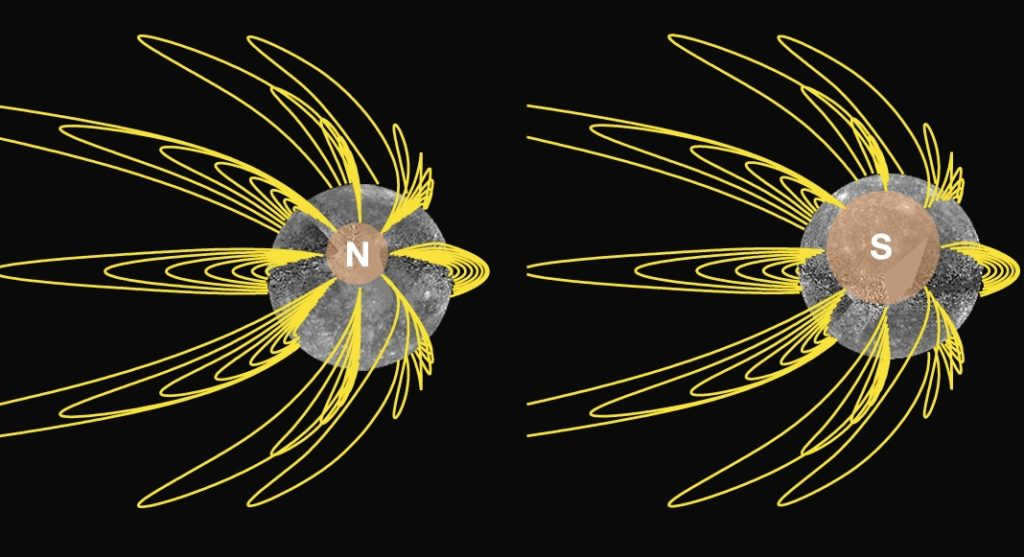
The magnetic field of the smallest planet is known for its dipole structure and remarkable symmetry. Its deviation from the rotational axis is only 10 degrees, making it challenging to determine its origin. Scientists believe that the creation of Mercury’s magnetic field is due to the dynamo effect, a process similar to what occurs on Earth.
Despite its relatively low strength, Mercury’s magnetic field has the ability to impact the movement of the solar wind. As a result, it has a magnetosphere, which is also characterized by its small size.
In 2003, it was discovered that due to its close proximity to the Sun, unusual effects occur on the surface of Mercury caused by its solar wind. Firstly, “windows” or zones appear in the magnetosphere as a result of a decrease in field strength. Secondly, the solar wind leads to the formation of vortices, which are tangled knots of the planet’s magnetic field that extend up to a distance of 800 km.
Impact Craters
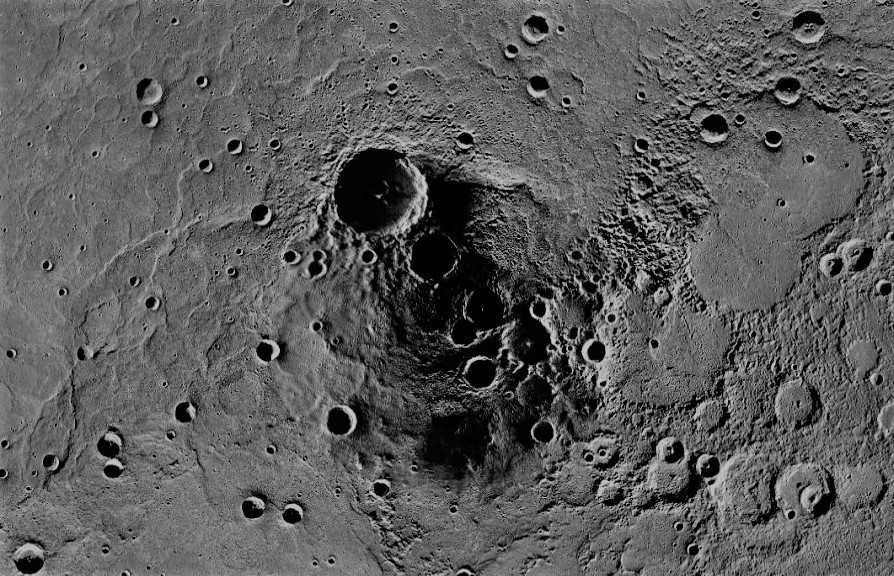
Research on Mercury has revealed that its surface is studded with craters of varying sizes. The planet’s topography consists of small depressions resembling bowls, as well as large formations spanning several hundred kilometers. Some of these craters have been heavily damaged over time, while others have managed to maintain their original structure.
Fascinating fact: The craters on Mercury are smaller in size compared to those on the Moon. This disparity can be attributed to the planet’s higher gravitational force.
As per the theory explaining its origin, Mercury came into existence as a result of a collision with a celestial object measuring 100 kilometers in diameter. The impact was of such magnitude that the seismic waves produced during the event propagated throughout the entire planet.
There is another notable crater on Mercury known as Kuiper, which happens to be the most luminous region. This particular area spans up to 60 kilometers in length.
Organizational Framework
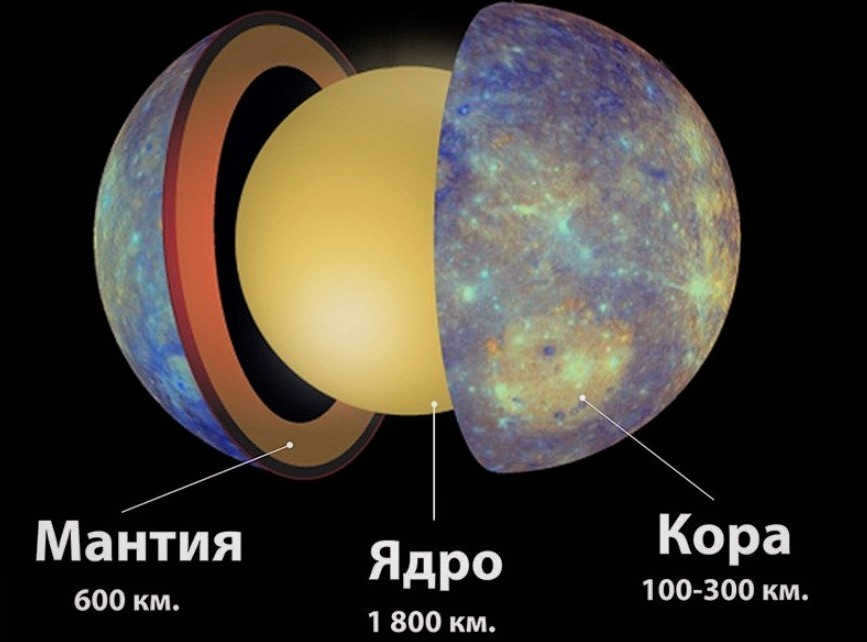
Mercury’s crust, which measures 100 to 300 km in thickness, is its top layer. The presence of surface bulges on the planet indicates its resemblance to Earth, suggesting that the crust is quite delicate.
Comprising the middle layer of Mercury is its mantle, which measures approximately 600 km in thickness. Compared to other celestial bodies, Mercury’s mantle is relatively thin. Scientists attribute this to the planet’s early encounters with planetesimals, which significantly reduced the mantle’s mass.
The reason for such a high density of Mercury can be attributed to one factor: its core is in a liquid state. This fact is supported by the findings of a study that examined the behavior of radio waves bouncing off the planet’s surface.
Although the exact age of Mercury remains unknown, it is believed to have formed around the same time as the other planets in the solar system. This conclusion is drawn from radiocarbon analysis results, which suggest that Mercury emerged approximately 4.6 billion years ago.
Life on Mercury
The conditions on Mercury are not suitable for the emergence of life. In order for self-reproducing organisms to develop on the planet, several prerequisites must be fulfilled. One crucial factor is the ability for water to remain in a liquid state for extended periods of time, without freezing or evaporating. However, on Mercury, there are significant temperature fluctuations that make it impossible for life to originate. Furthermore, the planet has also been subjected to a massive bombardment of meteorites around 3.9 billion years ago, which further hindered the possibility of life on Mercury.
Planet’s Discovery
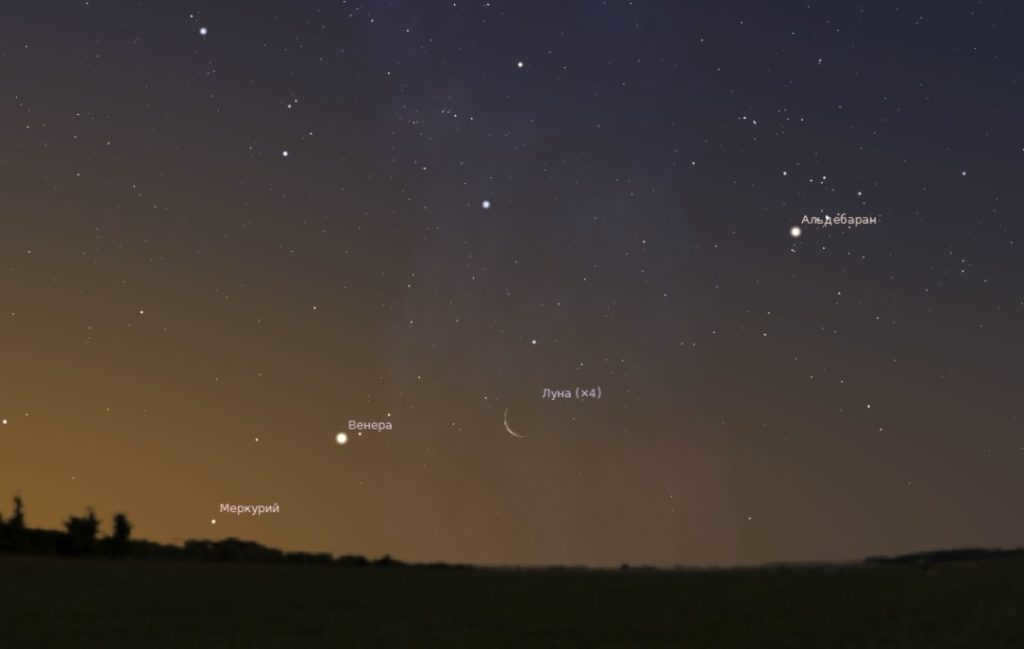
The specific date of Mercury’s discovery remains a mystery. Records from Sumerian civilization, dating back to the second millennium BC, mention the planet. Subsequently, ancient Greeks, Romans, as well as scientists in the Middle Ages and the Renaissance, made note of Mercury in their writings.
In spite of the remarkable variations in temperature, water exists on Mercury. It manifests in the form of ice, which can be found in craters situated at the planet’s poles. The absence of solar radiation prevents the water from evaporating in this region.
What is the distance between Mercury and the Sun?

As noted earlier, the distance between Mercury and the Sun is not constant. This parameter is influenced by the position of the planet in its orbit. Mercury can come as close as slightly over 46 million kilometers to the Sun and retreat as far as 70 million kilometers.
What is the duration of the journey to Mercury?
The length of the trip from Earth to Mercury varies depending on the type of spacecraft used. Light can travel this distance in just 4.3 minutes. The Mariner-10 spacecraft, launched in 1974, took 147 days to reach Mercury. Another artificial satellite called Messenger arrived in Mercury’s orbit after 40 years, completing the journey in 1,260 days.
The ancient Roman divine pantheon is the source of many names for celestial bodies. The reason behind Mercury’s specific name remains unknown. Furthermore, the planet was referred to differently depending on the source. The ancient Greeks mentioned it as Hermes and Apollo, while in Babylon it was known as Napu. However, it was the Romans who officially established the name Mercury, identifying it with the god of commerce.
Distinctive Features
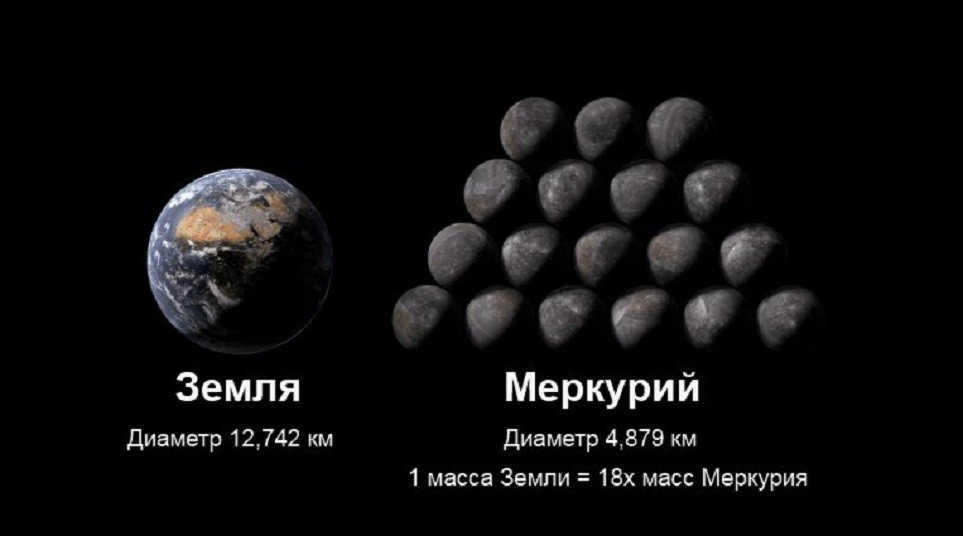
The planet Mercury can be described by the following characteristics:
- Mercury has a density of 5430 kg/m3;
- Its mass is 0.055 times the weight of Earth (3.3*1023 kg);
- The equator diameter of Mercury is 4880 km;
- Mercury has a slight axis tilt of 0.01 degrees;
- A day on Mercury lasts 59 Earth days;
- The average temperature on the planet’s surface is -73 degrees Celsius;
- Mercury is located at an average distance of 58 million kilometers from the sun;
- A year on Mercury lasts 88 Earth days;
- Mercury has an orbital velocity of 48 kilometers per second;
- The orbital eccentricity of Mercury is 0.0206;
- The orbital inclination of Mercury to the ecliptic is 7 degrees;
- The free-fall velocity on Mercury is 3.7 meters per second.
Unlike Earth, Mercury does not have any natural satellites.
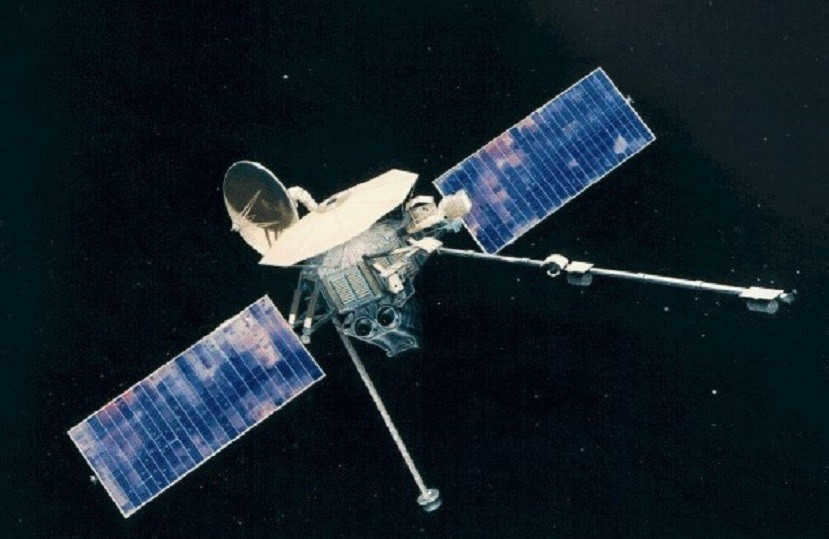
The study of Mercury is hindered by its close proximity to the celestial luminary. In 1974, the Mariner 10 space probe successfully obtained the first clear photographs of the planet after making three passes over it. It took over 40 years until the Messenger spacecraft finally reached Mercury. This probe also orbited the planet and after seven years, it settled into the planet’s orbit. Thanks to the Messenger spacecraft, scientists were able to gather valuable information about Mercury’s magnetic field, atmosphere, and surface features.





